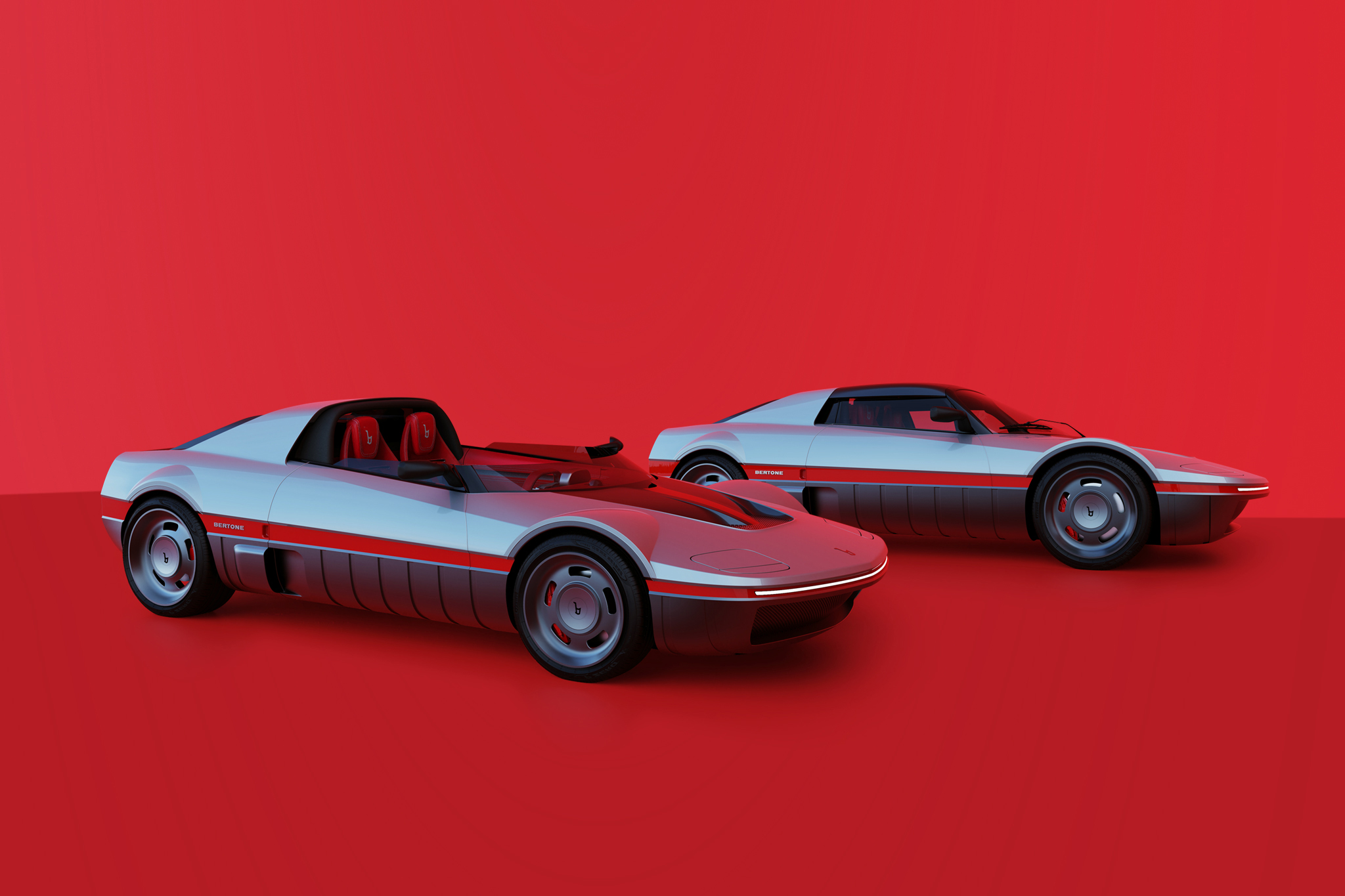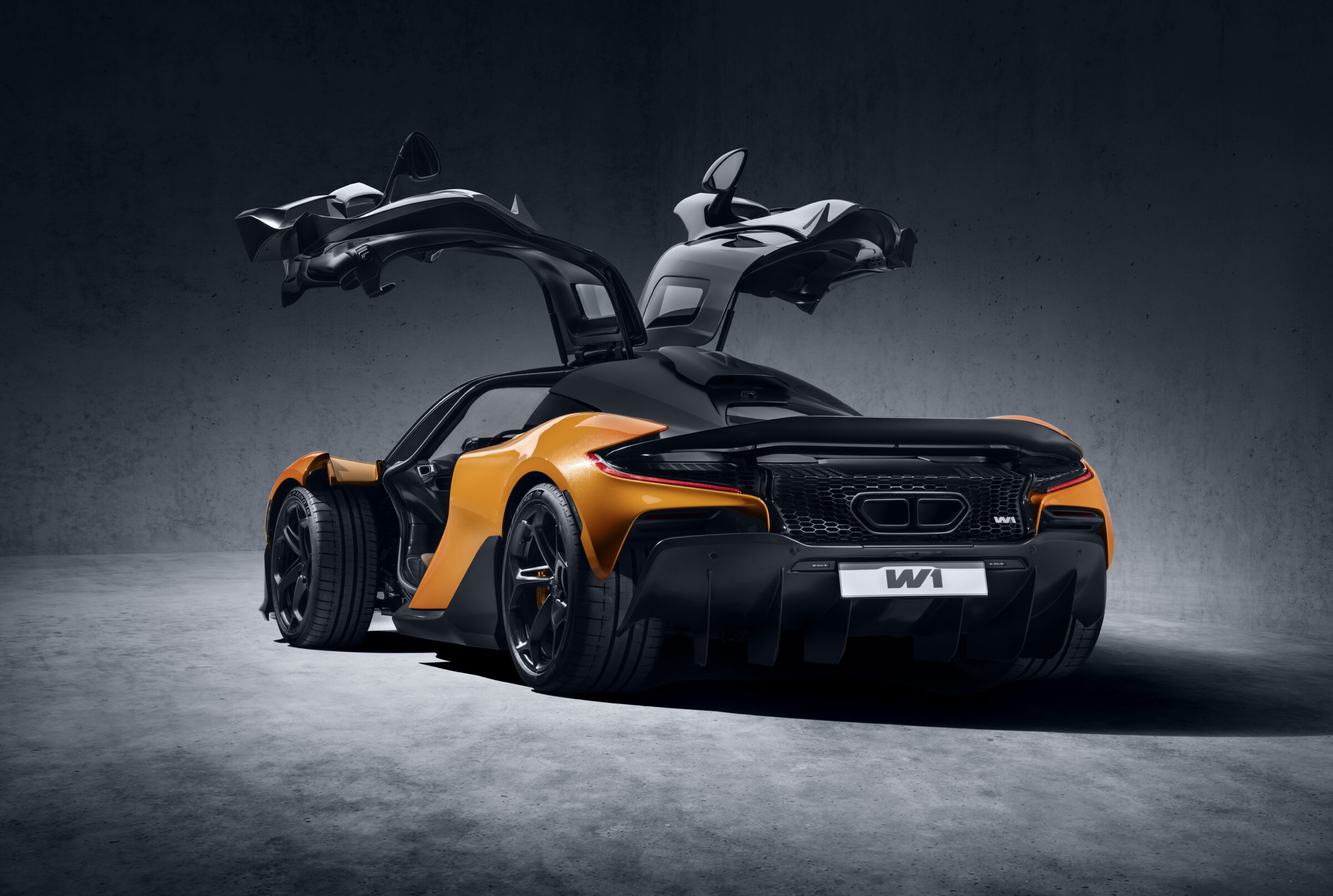Škoda 180 RS and 200 RS
Sporty Škoda models have been bearing the RS abbreviation for some time. But on which vehicle did we see this for the first time? To find out, you need to take a look at the Czech brand’s motorsport history. Specifically, we are talking about rally competitions, which until the early 1970s for Škoda took place mainly in the classes up to 1.3 liters displacement. On the other hand, the Czech brand realized that there would probably be no more successes in the years that followed. So the decision was finally made to develop a new vehicle with a larger engine. The 110 R presented in 1970 was used as the base vehicle. This rear-engined coupé already had an aluminium engine with OHC valve control ex works. The five-speed transmission of the 603-2 was purchased from Tatra for the prototypes. They also used all the knowledge gained from rallying the 120 S. Initial road tests were carried out with new chassis under slightly modified bodies of the 1000 MB and the 100 L.
Test drives led to modifications
The factory drivers at the time included Jaroslav Bobek, Bořivoj Kořínek, Oldřich Horsák and Jiří Motal. They tested the new cars on both racetracks and rally tracks. Meanwhile, Jiří Šedivý worked on an independent body at the plant in Mladá Boleslav. Compared with the standard 110 R, he reduced the roof height by 7.5 centimeters. The front hood and roof were made of 0.7 millimeter thin aluminium sheet, while the rear hood was made of fiberglass-reinforced plastic. In this way, Škoda reduced the vehicle weight by around 85 kilograms. However, the position of the engine in front of the rear axle already made the 110 R difficult to drive, with a high tendency to understeer. This impression was also supported by computer simulations of the shift in the center of gravity in various driving situations. With the help of these findings, work on the 180 RS and 200 RS began in October 1973. The first car was already on the starting line in May 1974.
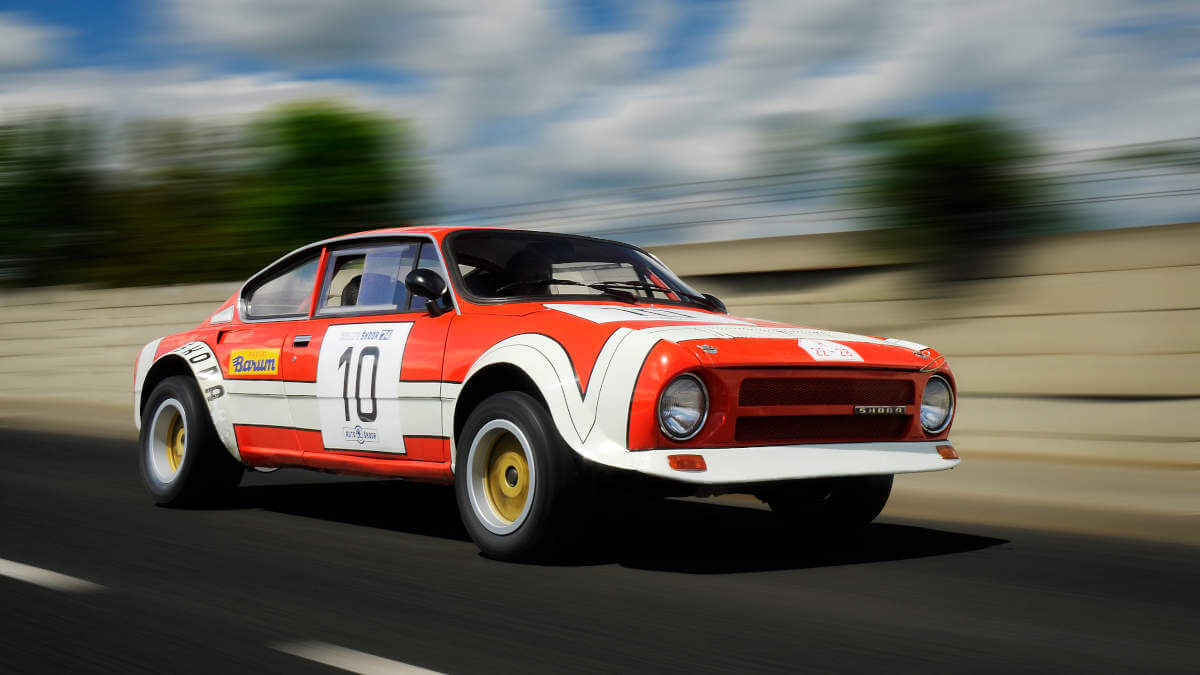

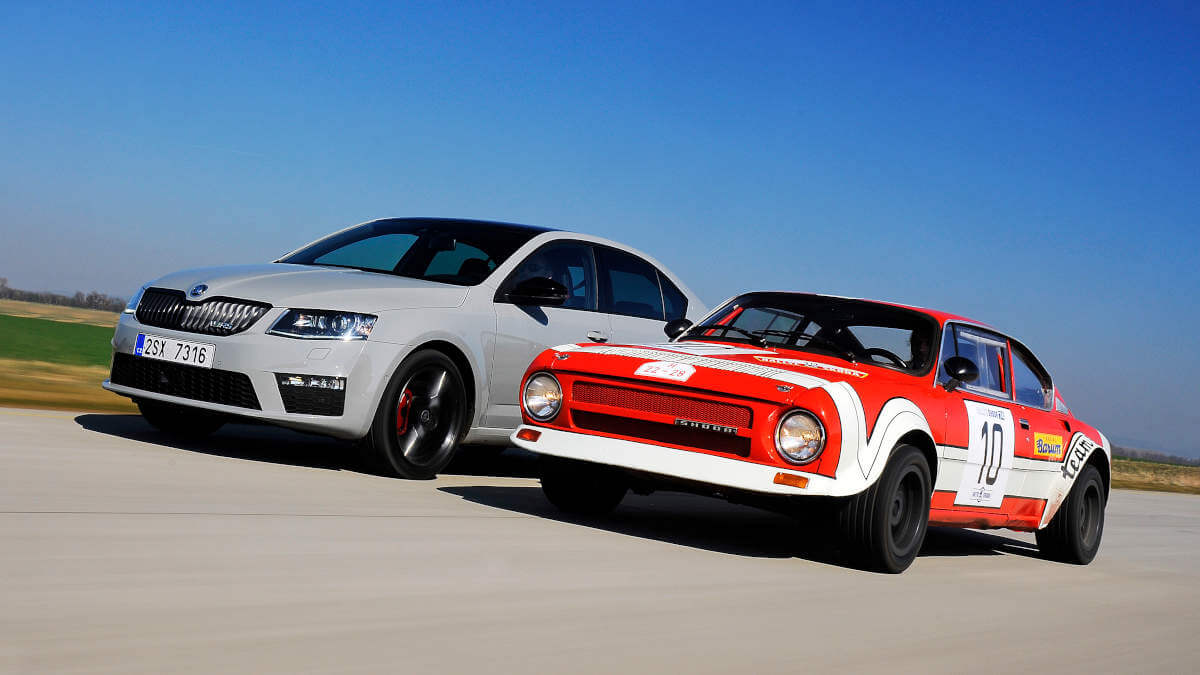

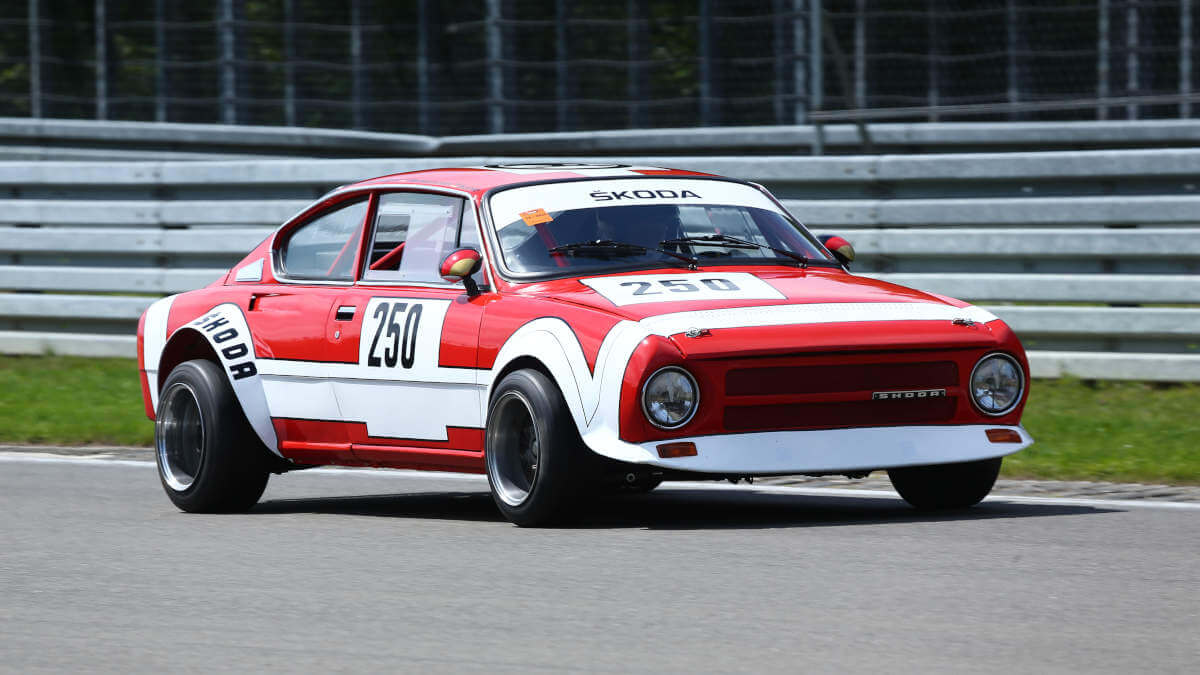

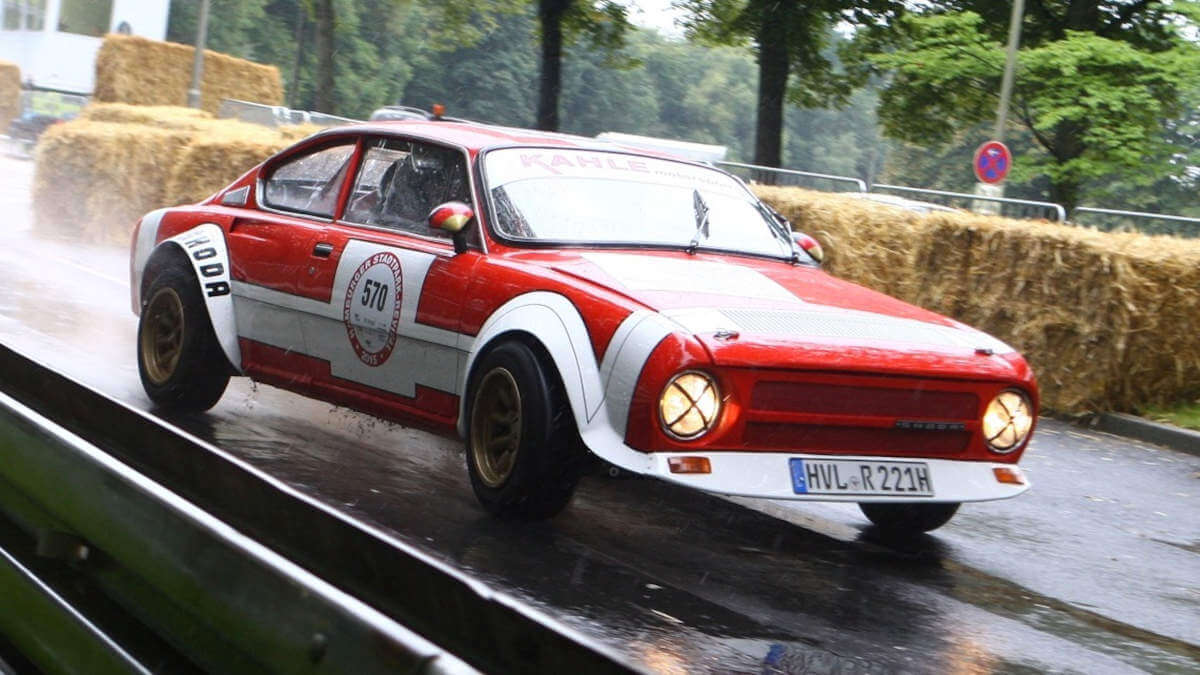



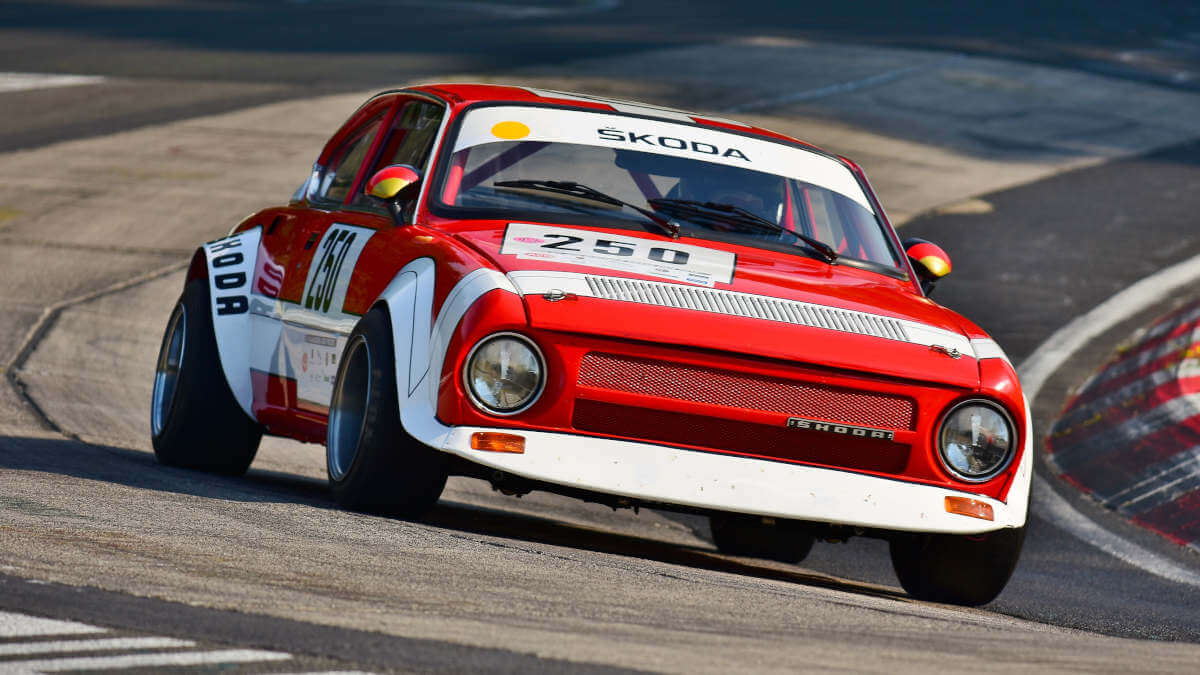

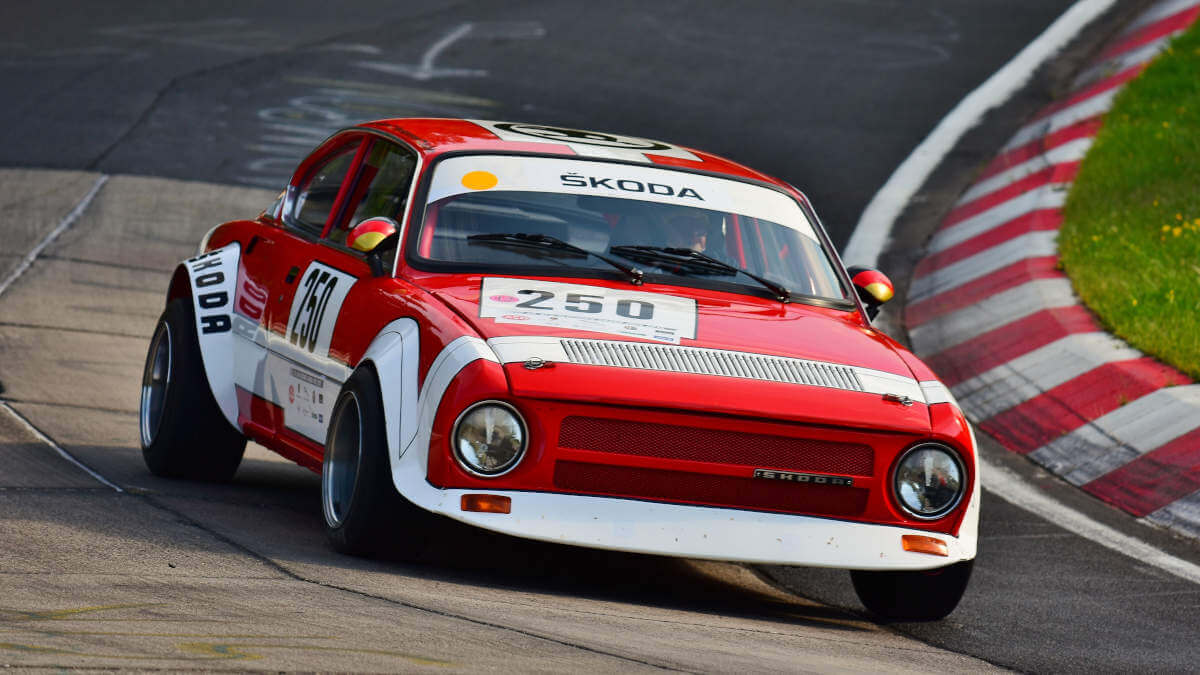

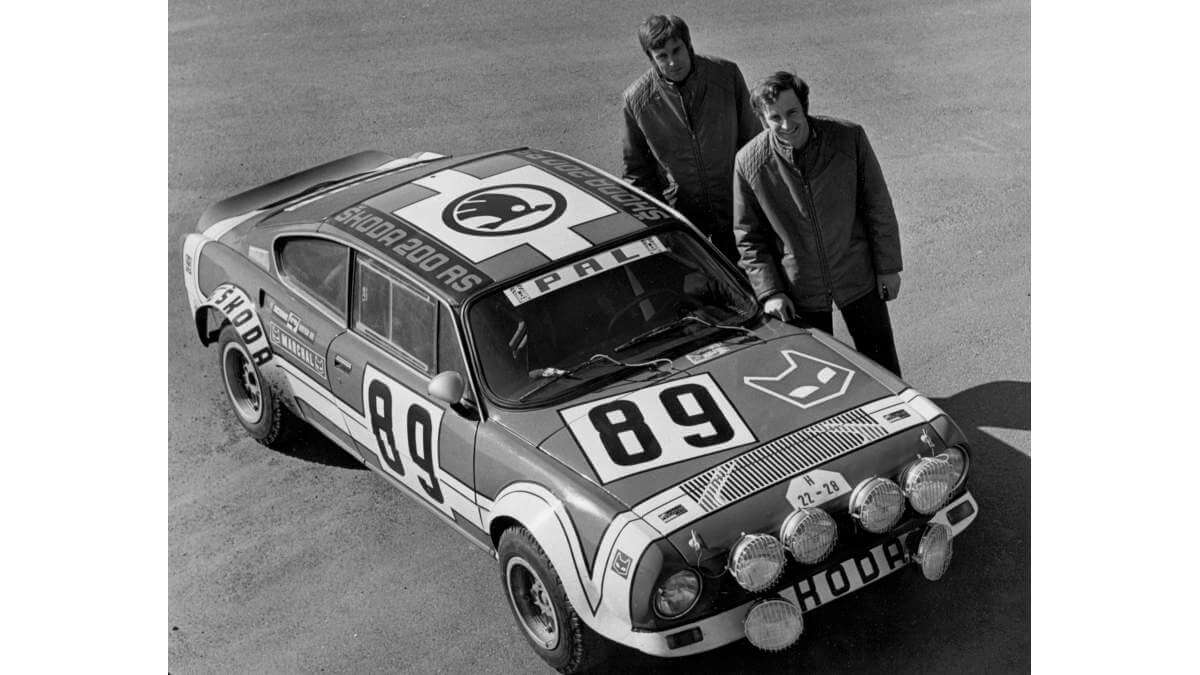

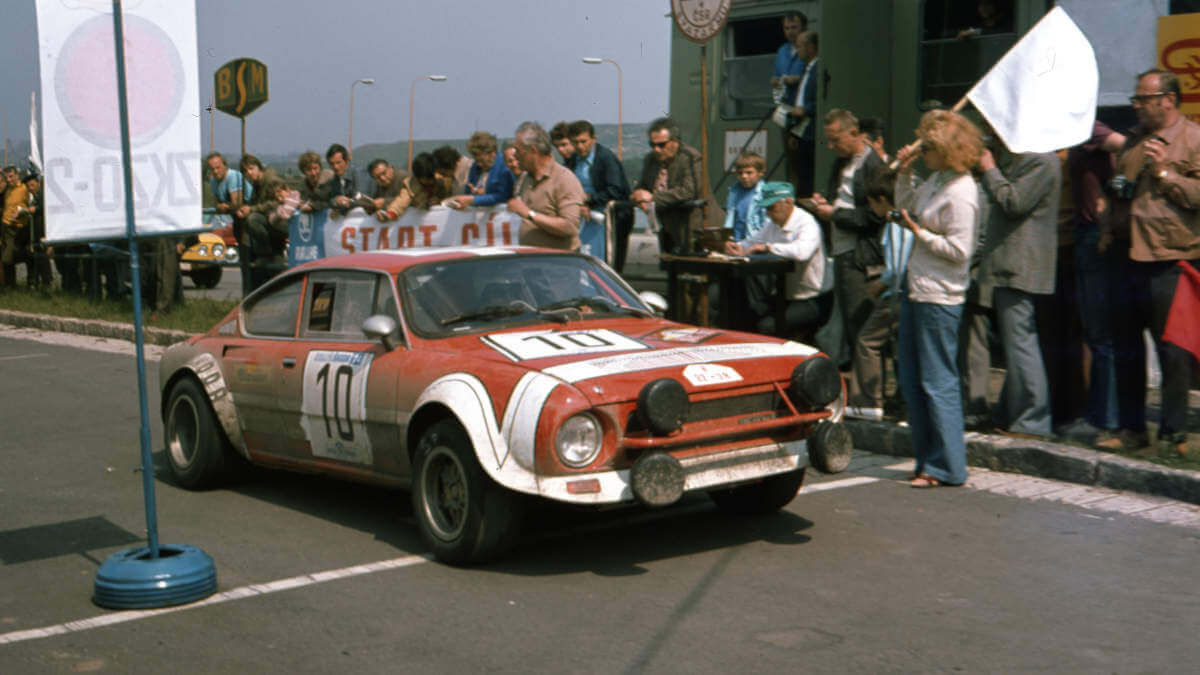

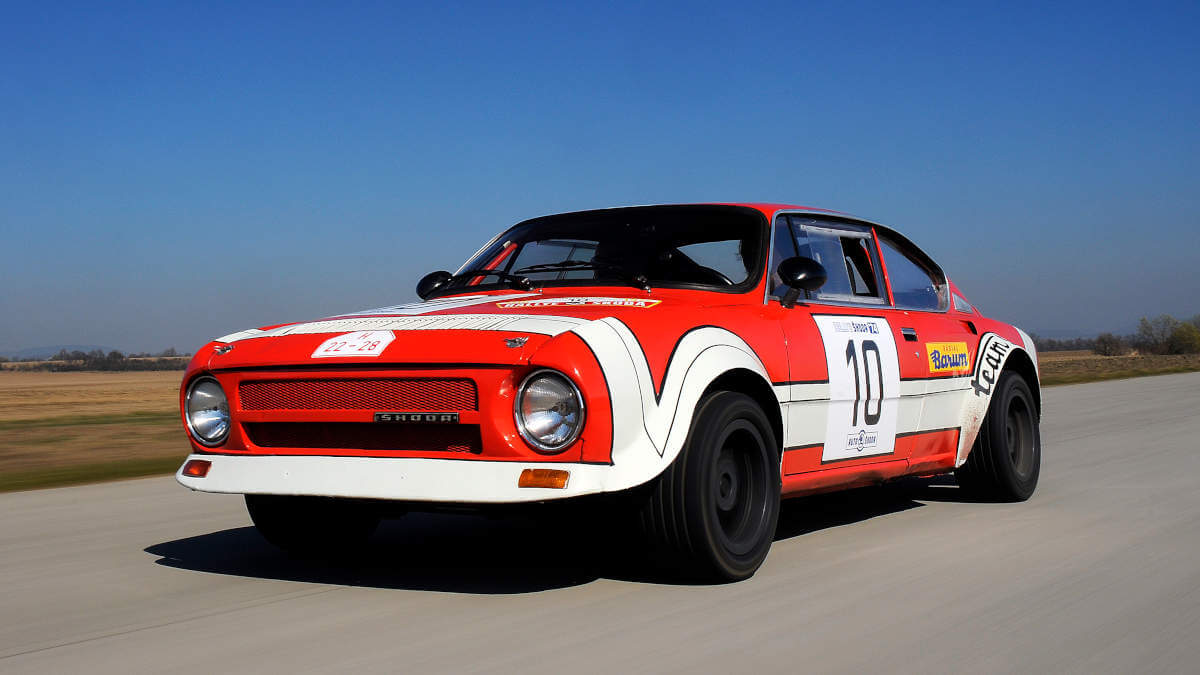

Lift disturbance at the front and rear
To make the rally cars as safe as possible, Škoda integrated an extensive rollcage into the bodyshell with lowered roof. An air-tube radiator with exhaust openings in the front hood was installed in the front section. The turn signals moved to the “lift disturbance” attached underneath, as the spoiler lip was referred to in the internal documents. The choice of GRP for the rear hood meant that it could be freely shaped. It ended up including not only air intakes for the engine, but also a spoiler lip with a tear-off edge to disrupt lift. To provide space for magnesium wheels up to eight inches wide at the front and even ten inches wide at the rear, the fenders were widened accordingly. Behind them sat Girling disc brakes at the front and drums from the 110 R at the rear.
Transmission from the Porsche 911
The front axle of the 120 S received extended and reinforced wishbones as well as adapted steering. Triangular wishbones provided more grip on the rear axle. Toe and camber could be freely adjusted. Škoda also received Koni shock absorbers and coil springs through good contacts. With the help of the basic engine called Š720, the displacement could be kept variable in order to react to changes in the regulations. Two variants of the four-cylinder engine were created, one with a displacement of 1,772 cc and one with 1,997 cc, both with dry sump lubrication. While the bore of the cylinders was identical, the stroke of the crankshaft varied. The 180 RS thus produced 154 hp and the 200 RS 163 hp. For the transmission, Škoda decided to buy the 915.003.113 five-speed box from the then current Porsche 911, with a single-disc clutch from Fichtel & Sachs. Depending on the gear ratio, speeds of up to 149 mph were possible.
End of service after only three rallies
The Škoda 200 RS made its first appearance at the IDA Rally in May 1974. At the Barum Rally shortly afterwards on June 1, there were already two cars. Both wore a red and white livery. The Škoda Rally followed with one 180 RS and two 200 RSs. In all three events, the new cars were able to compete well with international vehicles. However, the World Motorsport Federation decided to make a significant change to the regulations for 1975, excluding pure prototypes such as the 180 RS and 200 RS in favor of modified production cars. This brought the Škoda’s career to a very sudden end after just three rallies. However, enough experience had been gained to be able to develop a new rally car, the 130 RS, based on the 110 R. This car had an unladen weight of only 720 kilograms and produced 140 hp from 1.3 liters of displacement. Škoda achieved national and international successes with this model until 1983.
Images: Škoda



